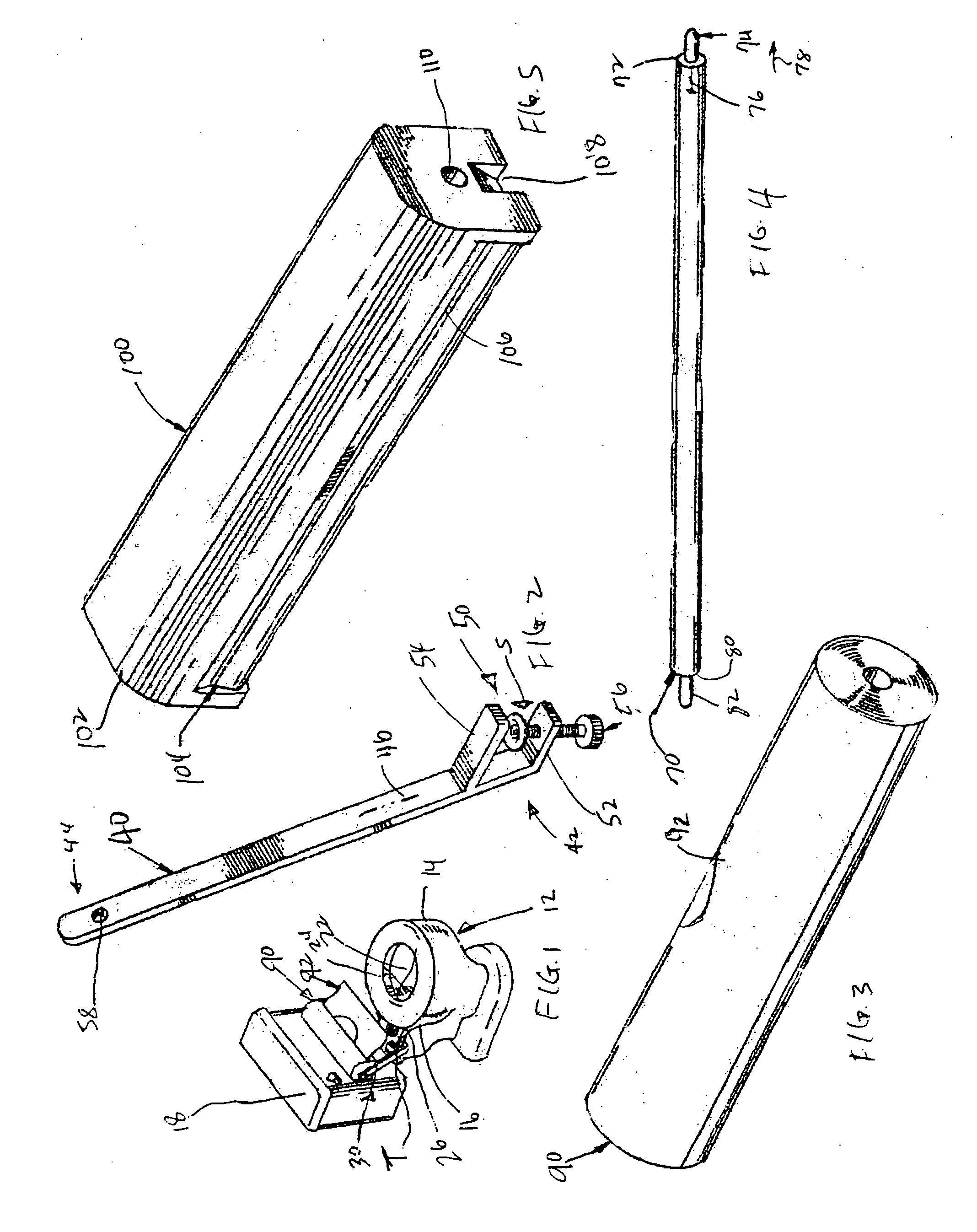Pull over toilet paper cover
a technology for toilet paper covers and toilet seats, applied in the field of toilet seats and accessories, can solve the problems of health risks, unsanitary and potentially unhealthy toilet seats, and inability to clean toilet seats, and achieve the effect of easy replenishment and easy to s
- Summary
- Abstract
- Description
- Claims
- Application Information
AI Technical Summary
Benefits of technology
Problems solved by technology
Method used
Image
Examples
Embodiment Construction
[0021] Referring to the figures, it can be understood that the present invention is embodied in a device for storing and dispensing toilet seat covers.
[0022] The overall dispensing device comprises a toilet bowl unit 12 which is well known in the art and which includes a front end 14 which a user faces when using the toilet bowl unit, a rear end 16 which is located behind the user when the user is using the toilet bowl unit and a water storage tank 18 mounted adjacent to the rear end. The toilet bowl has a major axis 22 which extends between the front end and the rear end and a minor axis 24 which extends transverse to the major axis. Toilet bowl unit 12 further including a rim 26 having a thickness T.
[0023] A mounting bracket unit 30 is fixedly mounted on the toilet bowl unit between the water storage tank and the rear end of the toilet bowl unit. The mounting bracket unit includes first and second mounting arms. The mounting arms are identical, therefore, only one arm will be sh...
PUM
| Property | Measurement | Unit |
|---|---|---|
| thickness | aaaaa | aaaaa |
| distance | aaaaa | aaaaa |
| oblique angle | aaaaa | aaaaa |
Abstract
Description
Claims
Application Information
 Login to View More
Login to View More - R&D
- Intellectual Property
- Life Sciences
- Materials
- Tech Scout
- Unparalleled Data Quality
- Higher Quality Content
- 60% Fewer Hallucinations
Browse by: Latest US Patents, China's latest patents, Technical Efficacy Thesaurus, Application Domain, Technology Topic, Popular Technical Reports.
© 2025 PatSnap. All rights reserved.Legal|Privacy policy|Modern Slavery Act Transparency Statement|Sitemap|About US| Contact US: help@patsnap.com


